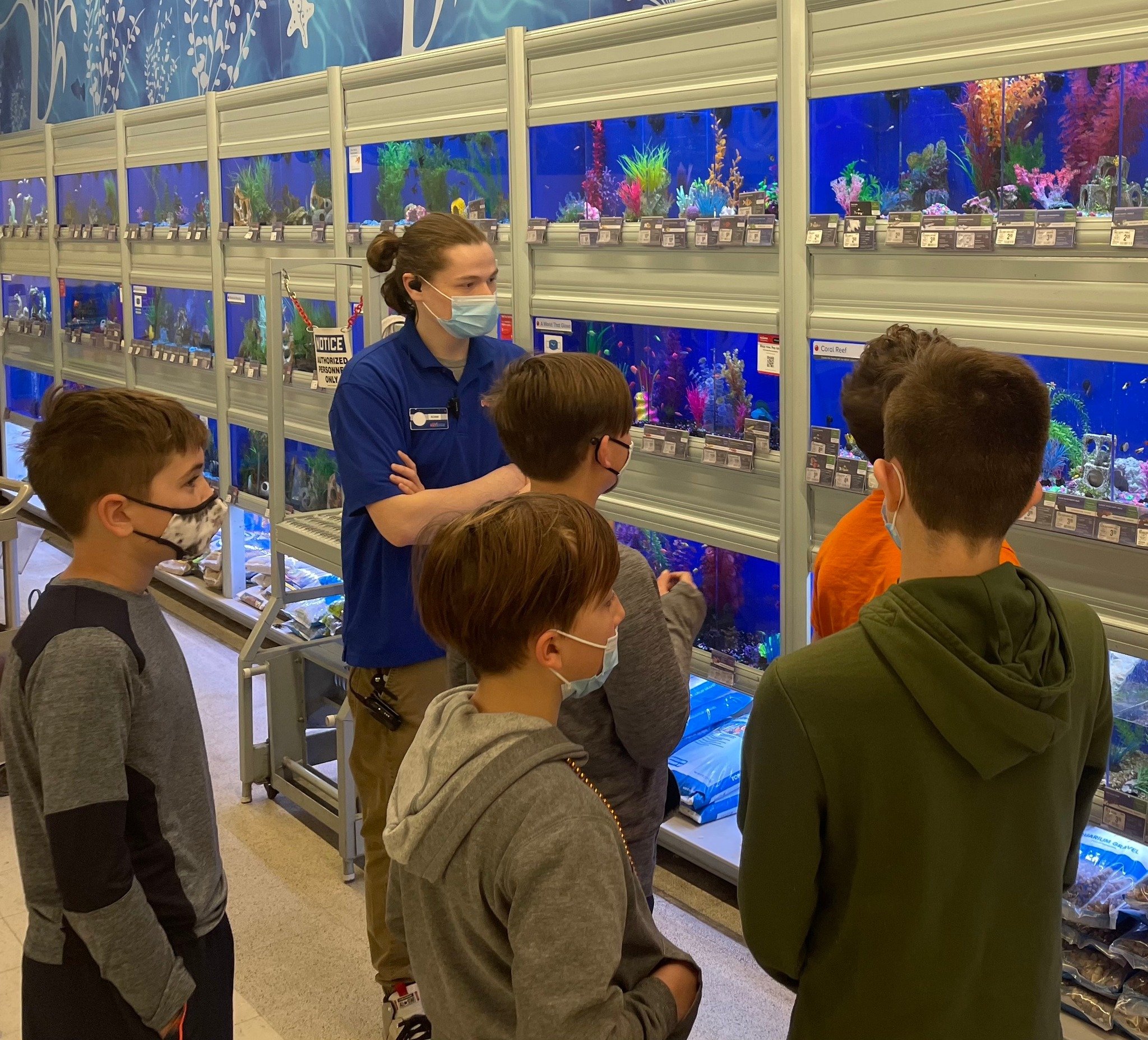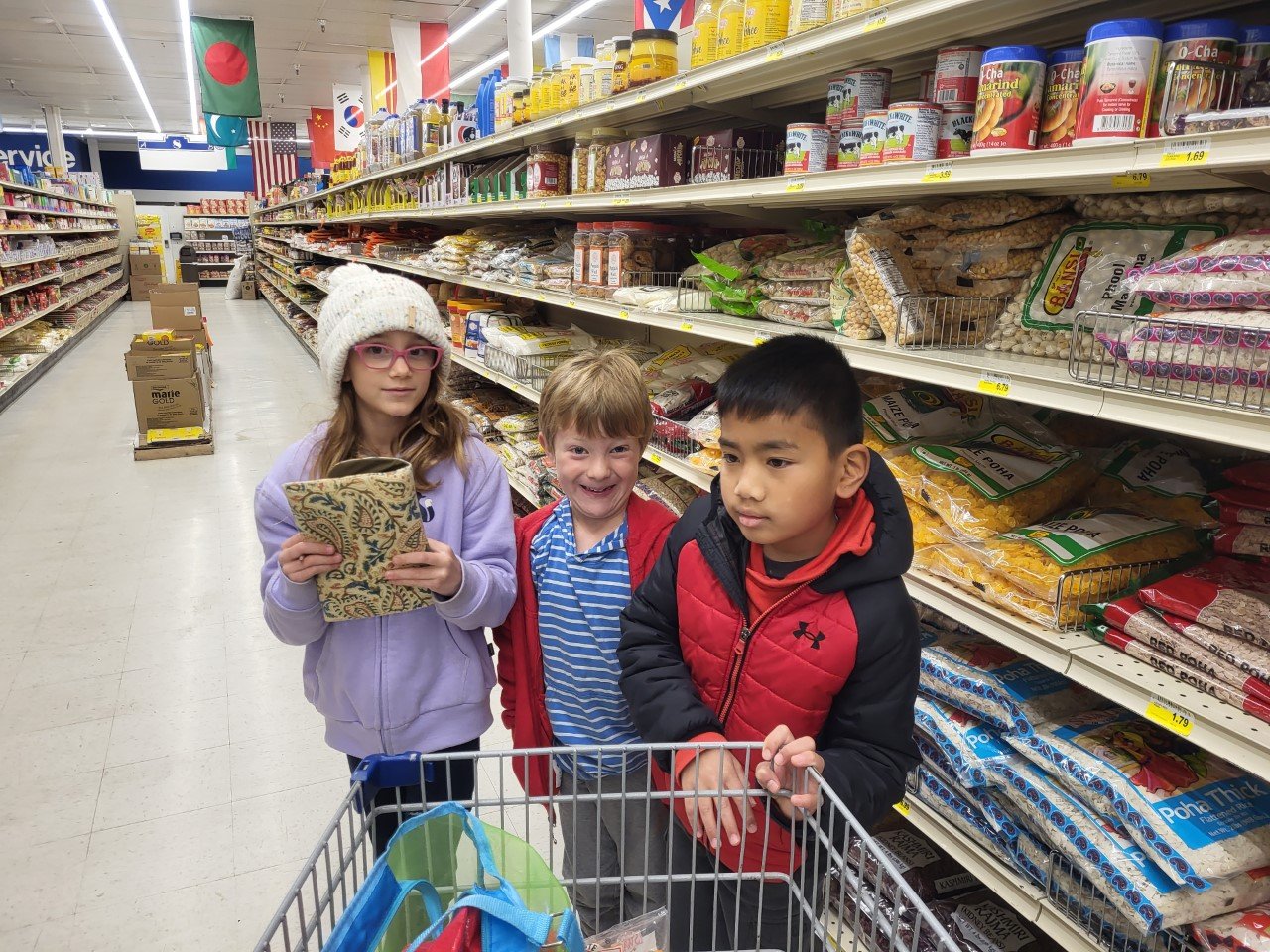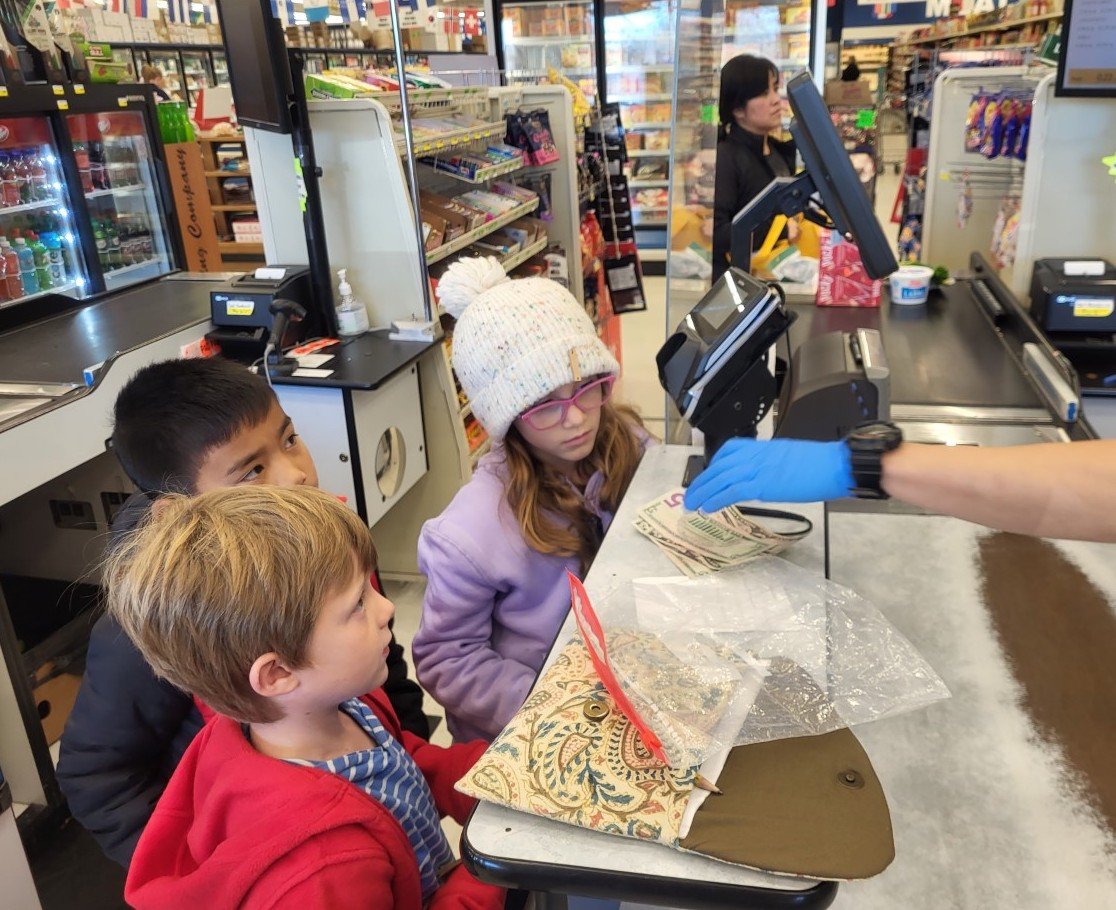Going Out in the Montessori Elementary Classroom
 If you have an elementary child at a Montessori school or if you spend any time on our socials, you probably have heard or seen the phrase “Going Out”. And does the Montessori lingo never end?! It is probably one of the things students most look forward to about being in elementary. “I get to go explore outside of the classroom!!” Besides being a lot of fun, these opportunities for Going Out serve many purposes for the elementary-age child. Today, let’s deep dive into one of the most-loved, and perhaps most-unique, aspects of the Montessori Elementary classroom, the Going Out.
If you have an elementary child at a Montessori school or if you spend any time on our socials, you probably have heard or seen the phrase “Going Out”. And does the Montessori lingo never end?! It is probably one of the things students most look forward to about being in elementary. “I get to go explore outside of the classroom!!” Besides being a lot of fun, these opportunities for Going Out serve many purposes for the elementary-age child. Today, let’s deep dive into one of the most-loved, and perhaps most-unique, aspects of the Montessori Elementary classroom, the Going Out. Going Out is a critical component of the Montessori Elementary classroom (grades 1-6). The Elementary child is in the 2nd plane of development (age 6-12 years) and therefore has unique proclivities and needs. If you don’t know about Montessori’s planes of development, check out the blog post entitled, “Montessori Theory: The Four Planes of Development”. The rational mind of the 2nd plane child is ready to dive into the “Why” behind everything! Why is the sun warm? Why do we have rules in a community? Why do I have to listen to you? Why does my family make different decisions than yours? In the classroom, the child explores their questions through research, reports and larger projects. The Montessori guide connects the child to materials and books in the classroom to further fuel interests, but they must go beyond the classroom to fully satisfy their need for answers. Going Out provides an opportunity for the child to dive further into the research process by visiting a local museum, zoo, library, and the like, to gain real-world knowledge that could not possibly exist in the classroom. Additionally, the classroom guide might connect the child with an expert in the field for an interview.
Going Out is a critical component of the Montessori Elementary classroom (grades 1-6). The Elementary child is in the 2nd plane of development (age 6-12 years) and therefore has unique proclivities and needs. If you don’t know about Montessori’s planes of development, check out the blog post entitled, “Montessori Theory: The Four Planes of Development”. The rational mind of the 2nd plane child is ready to dive into the “Why” behind everything! Why is the sun warm? Why do we have rules in a community? Why do I have to listen to you? Why does my family make different decisions than yours? In the classroom, the child explores their questions through research, reports and larger projects. The Montessori guide connects the child to materials and books in the classroom to further fuel interests, but they must go beyond the classroom to fully satisfy their need for answers. Going Out provides an opportunity for the child to dive further into the research process by visiting a local museum, zoo, library, and the like, to gain real-world knowledge that could not possibly exist in the classroom. Additionally, the classroom guide might connect the child with an expert in the field for an interview. A second reason for Going Outs is that the child emerges as a social being in the 2nd plane. In the first plane, the child is experiencing their own personal development (learning to walk, talk, and gaining functional independence), but as they enter the 2nd plane there becomes an acute awareness of the people around them and a desire to relate and to connect. The child becomes fascinated by community dynamics, how to belong, and the expectations and guidelines of each community member. Desire outstrips ability at this early social stage and, at first, the child needs a lot of guidance and support from classroom adults to navigate the misunderstandings and disagreements that naturally arise. The social neophyte requires experience in the real world to witness civil adult interaction and to practice taking part in their culture. The child needs opportunities to pay at a cash register, ask for help from the librarian or store clerk, navigate their way around town, and learn the various expectations for behavior in different venues (concert hall vs. basketball stadium). Going Out is a perfect way for our Elementary children to practice how to interact in their society and to develop their emerging social instinct.
A second reason for Going Outs is that the child emerges as a social being in the 2nd plane. In the first plane, the child is experiencing their own personal development (learning to walk, talk, and gaining functional independence), but as they enter the 2nd plane there becomes an acute awareness of the people around them and a desire to relate and to connect. The child becomes fascinated by community dynamics, how to belong, and the expectations and guidelines of each community member. Desire outstrips ability at this early social stage and, at first, the child needs a lot of guidance and support from classroom adults to navigate the misunderstandings and disagreements that naturally arise. The social neophyte requires experience in the real world to witness civil adult interaction and to practice taking part in their culture. The child needs opportunities to pay at a cash register, ask for help from the librarian or store clerk, navigate their way around town, and learn the various expectations for behavior in different venues (concert hall vs. basketball stadium). Going Out is a perfect way for our Elementary children to practice how to interact in their society and to develop their emerging social instinct. Some might say, isn’t Going Out like a field trip? While both experiences take the child outside the classroom, field trips are generally for the whole classroom and are planned by the teacher. For example, the class might attend the symphony or museum exhibit, but those trips are organized and led by adults. Going Out is different in that it is planned and carried out by small groups of students with minimal assistance by the adults. The children gain experience with phone conversations and email correspondence as they plan their Going Out, and they must engage with and navigate their way using maps to find the best route to their location. While at the location, they are responsible for leading the way and communicating with shop owners, docents, etc. Chaperones are present to give support when needed but they allow space for the child to learn from their experience, and even from their mistakes when safe to do so. For example, a chaperone driver will follow directions from the child, even if it means taking a wrong turn, so that the child can have the experience of solving the problem of potentially getting lost.
Some might say, isn’t Going Out like a field trip? While both experiences take the child outside the classroom, field trips are generally for the whole classroom and are planned by the teacher. For example, the class might attend the symphony or museum exhibit, but those trips are organized and led by adults. Going Out is different in that it is planned and carried out by small groups of students with minimal assistance by the adults. The children gain experience with phone conversations and email correspondence as they plan their Going Out, and they must engage with and navigate their way using maps to find the best route to their location. While at the location, they are responsible for leading the way and communicating with shop owners, docents, etc. Chaperones are present to give support when needed but they allow space for the child to learn from their experience, and even from their mistakes when safe to do so. For example, a chaperone driver will follow directions from the child, even if it means taking a wrong turn, so that the child can have the experience of solving the problem of potentially getting lost. We are so lucky to have the supportive parent community and staff that expands our ability to take students on Going Outs. These experiences deepen the learning initiated in the classroom and foster the social development of the 2nd plane child.
We are so lucky to have the supportive parent community and staff that expands our ability to take students on Going Outs. These experiences deepen the learning initiated in the classroom and foster the social development of the 2nd plane child.
Dr. Montessori said, “When the child goes out, it is the world itself that offers itself to him. Let us take the child out to show him real things instead of making objects which represent ideas and closing them up in cupboards.”
Objects are important for grasping concepts, and we certainly use them in the elementary Montessori environment, but without connecting them to life outside the classroom, we deprive students of deeper learning and the opportunity to find their place in a wider world.

